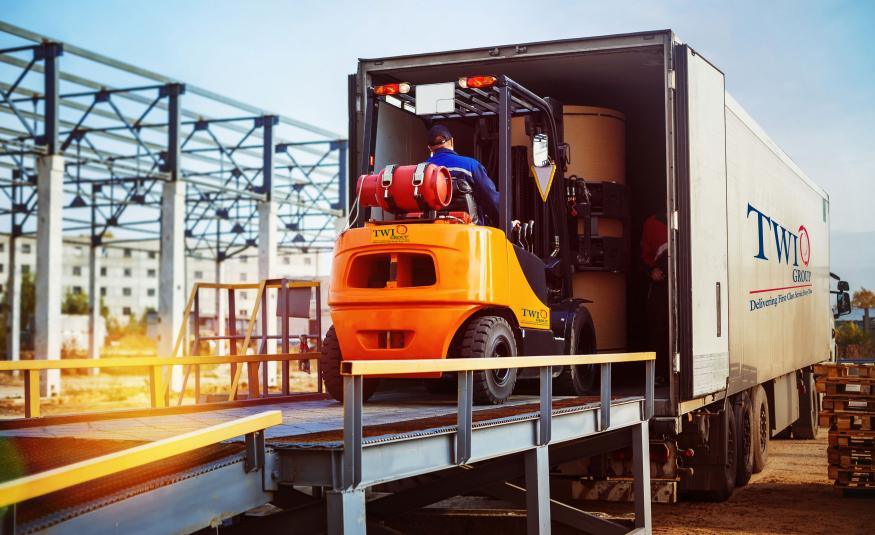The exhibition and events logistics industry is on the brink of a massive transformation.
Here, three members of the International Exhibition Logistics Association (IELA) explain how technology is impacting the sector. Dean Wale (CEVA Showfreight UK), Lars Pohlmann (Schenker Deutschland AG Germany) and Greg Keh (TWI Group, Inc. USA) share insights into the digital transformation process at trade shows and events.
What does technology mean for your day-to-day business?
Dean Wale: Technology is at the forefront of everything we do. By digitalising, we have saved a significant amount of time particularly on the show floor/exhibition ground. Our show management teams and forklift operators use ‘real time’ technology to gain full visibility of the logistics operation.
Lars Pohlmann: The exhibition world has constantly changed over the past 10 years. Digitalisation is not just a buzzword, but an integral part of our day-to-day business. DB Schenker works with bespoke and state-of-the-art IT systems catered to exhibitions logistics. Being globally applied and interconnected, our innovative IT systems bring a sustainable approach to our business, simplifying processes and operations as well as providing added value.
Greg Keh: Our most complex problems are the actual innovation and implementation of new modernised technology into our business. Technology is key to TWI and our growth. The challenges are that, while there is a multitude of software available for freight forwarding, sales, and finance, there is no cross-functional solution creating strong workflow to overcome common problems or repetitive situations that take time to resolve, in particular for tradeshow shipping.
In our day-to-day business, tablets automate most of our work on site. For our offices, we use an enterprise level software for all sales functions, operations, billing and collections. Constant work on even faster and more efficient tools and systems sees our expenditure increase yearly on digitalisation.
What advantage does digitalisation bring to organisers and exhibitors?
GK: The advantage of digitalisation to an organiser and exhibitor is the ability to control cost and also control information. There are many issues affecting organisers and exhibitors that they have limited control over, such as increased currency exchange rates and rising fuel pricing. Since transportation is a key factor of any exhibition and event budget, controlling costs is key.
With digitalisation, we are able to offer more services with fewer staff. We are able to offer more information quickly that is automated and this allows us to be more efficient with our own staffing requirements. Overall, costs are controlled, services are faster and everyone benefits.
DW: CEVA Showfreight has recently developed its own app, which speeds up the onsite handling process while eliminating paper trails. Our ‘Showmate’ and PDA technology enables electronic signature capture and real time data transfer.
We have a full overview of the lorry park, transit times to site, loading times and proof of delivery. This assists us in the monitoring of busy periods and the scheduling of vehicles, staff and resources thus allowing us to provide important feedback to the organiser. This is just one advantage of digitalisation and how CEVA adapts added services.
LP: Digitalisation is a major driver for our product development. Our digital approach enables us to work with the highest level of efficiency and ensures our customers are receiving the best possible service and communication within the industry. In addition to this we are constantly looking ahead. DB Schenker has a ‘Global IT Innovation Team’ which constantly works on the automation of processes and development of new digital services aiming to meet the requirements of our industry.
What are the challenges? How can the IELA network support the transformation of the exhibition industry?
GK: The largest challenges are cost and the diverse needs of different corporate structures. IELA can be extremely vital to support the digital transformation by creating solid solutions for the industry. An analysis of the profitability or actual viability of supporting an IELA-wide software, which would require support in as many countries as IELA operates, would be both daunting and a challenge.
LP: The quick development of new services and adapting to technology and interface management are challenging because all clients have different requirements and logistical needs. In addition to what IELA already offers, we could further develop workshops encouraging its members and stakeholders to share best practices and to exchange experiences.
DW: The challenge for IELA is to push the boundaries of its members. IELA members are considered to be the best in the business, providing top quality performance and expertise. IELA needs to continually monitor the quality, standards and service levels of its members to ensure there is a clear distance between being an IELA member or not. This needs to be recognised when organisers choose a logistics partner.
What lessons did you learn at IELA’s congress in San Francisco this year?
DW: It was clear in San Francisco that we are in the middle of a rapidly transforming age. If we are not evolving, we will go backwards.
LP: Enabling change within the company delivers great input. This year IELA set good examples by addressing certain topics on digitalisation in the exhibition logistics. IELA is a valuable source of knowledge and inspiration for us. The IELA association backs us up as we all go through the same transformation process – an exciting, but sometimes challenging journey.
GK: The most important lesson I learned in attending sessions on digitalisation was the limited thinking that we all have about how digitalisation can assist us. Having a “vision” strategically on the next step of technology is so vast and so varied, that it could be difficult for IELA to support an association-wide process. However, there is a huge opportunity to provide leadership from IELA to all its members on digitalisation initiatives and since many of the members do not have a set strategy or budget, this could be a very important step to help out many members.
What are your visions for exhibition logistics? Where is the journey heading?
LP: The digital transformation is shaping the whole world. Technology has a huge impact on our industry of exhibition logistics. This change gives us the opportunity to review our current business model fostering development and, consequently, to transform to a modern, fully digitalised freight forwarding company.
DW: Plant and machinery such as forklifts and cranes, boats and planes haven’t changed and won’t change significantly in our lifetime, whereas technology is constantly developing. The way we operate on a daily basis is changing. Customers are looking for innovation, they want web-links rather than order forms and the ability to request a quotation, order and pay online.
GK: One gets used to how companies like Amazon automate the purchase, shipping and tracking of an order. In fact, clients have exactly the same expectations for tradeshow shipping and count on the same results as they do for other deliveries. This is a strong indication that our industry is headed towards automation. Clients want ease of information and transaction processes as well as 24/7 access to information without having to call anyone.
Automation is what will happen to our industry. Our journey should be to dictate this automation and digitalisation, or we may be susceptible to becoming a victim of it.
Our journey also includes the need for faster and more reliable internet access at show sites, since most of the digitalisation will be cloud-based and device-based. We all know how internet at a show is limited pre- and post-show as well as how difficult access is when all the visitors and exhibitors are in attendance. We need to grow this in the future.








